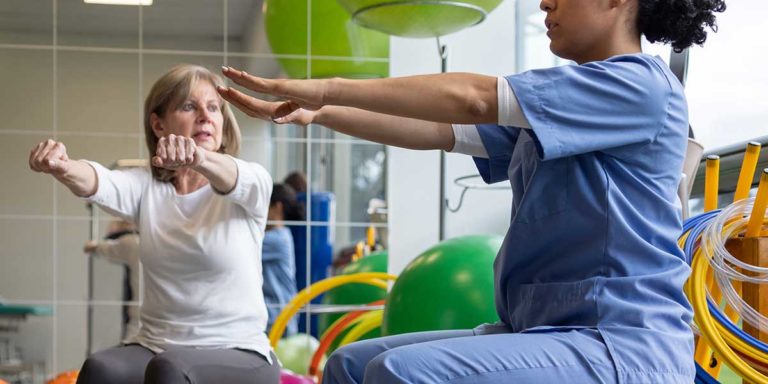Physical Therapy for Seniors
As we age, our bodies undergo various changes that can affect our mobility and overall quality of life. Reduced muscle strength, joint stiffness, balance issues, and chronic conditions become more common in the senior population. However, aging doesn’t have to be synonymous with decreased physical ability. Physical therapy can play a crucial role in enhancing mobility and improving the overall well-being of seniors, empowering them to maintain an active and independent lifestyle.
Understanding the Importance of Mobility for Seniors
Mobility is more than just the ability to move from one place to another. It encompasses various aspects of physical function, including walking, climbing stairs, getting up from a chair, and maintaining balance. These everyday activities are often taken for granted, but they become challenging for many seniors as they age. Reduced mobility can lead to a sedentary lifestyle, which, in turn, can exacerbate health problems and lead to a decline in overall health and independence.
Loss of mobility can have a significant impact on the quality of life for seniors, affecting their mental well-being and social interactions. It can lead to feelings of isolation, depression, and frustration. This is where physical therapy steps in to make a difference.
The Role of Physical Therapy for Seniors
Physical therapy is a specialized healthcare profession focused on restoring and maintaining physical function, improving mobility, and managing pain. For seniors, physical therapy can be tailored to address age-related concerns and specific health conditions. A licensed physical therapist works with seniors to develop personalized treatment plans that aim to achieve the following:
1. Pain Management:
Chronic pain, often associated with conditions like arthritis or osteoporosis, can severely impact the daily life of seniors. Physical therapists use various techniques to help manage pain, such as therapeutic exercises, manual therapy, and modalities like heat and cold therapy. By reducing pain, seniors can engage in other activities that improve their overall mobility.
2. Improved Balance and Fall Prevention:
Falls are a significant concern among seniors and can lead to severe injuries and a loss of confidence. Physical therapists work on balance training and stability exercises to reduce the risk of falls and promote safer movements. These exercises focus on strengthening core muscles and enhancing proprioception, which is the body’s awareness of its position in space.
3. Strength and Flexibility:
Aging can cause a decline in muscle mass and flexibility, leading to reduced range of motion and difficulty performing daily tasks. Physical therapy includes strength training exercises and stretching routines that target specific muscle groups to increase strength and flexibility. This can result in improved joint function and ease of movement.
4. Gait Training:
Walking abnormalities and gait issues are common in seniors and can significantly impact mobility. Physical therapists can analyze a senior’s gait and create a customized plan to correct any irregularities. Gait training helps seniors walk more efficiently and with reduced pain, enabling them to move around with greater confidence.
5. Customized Assistive Devices:
Physical therapists can recommend and provide appropriate assistive devices, such as canes or walkers, to aid seniors in their daily activities. They ensure these devices are properly fitted and teach seniors how to use them safely and effectively.
6. Functional Activities:
Physical therapists integrate functional activities into treatment plans to help seniors regain the ability to perform tasks necessary for independent living. These activities may include getting in and out of a car, dressing, or reaching for objects on higher shelves.
Benefits of Physical Therapy for Seniors
Physical therapy offers numerous benefits to seniors, including:
1. Enhanced Mobility:
By addressing specific mobility issues, physical therapy helps seniors regain their ability to move freely and safely.
2. Increased Independence:
With improved mobility, seniors can maintain their independence and continue to live in their homes for longer, reducing the need for assistance.
3. Better Quality of Life:
Physical therapy can significantly improve the overall well-being of seniors by reducing pain, increasing functional abilities, and fostering a sense of accomplishment.
4. Prevention of Complications:
By addressing mobility issues early on, physical therapy can prevent further complications and health risks associated with decreased physical activity.
5. Individualized Care:
Each senior’s needs are unique, and physical therapists create personalized plans that cater to their specific conditions and goals.
6. Emotional Support:
Physical therapists not only focus on the physical aspects but also provide emotional support to seniors as they progress through their therapy journey.
Physical therapy plays a vital role in enhancing the mobility and quality of life of seniors. Through personalized treatment plans, pain management, balance training, and strength exercises, physical therapists empower seniors to live active, independent, and fulfilling lives. As we celebrate the wisdom and experiences of our older generations, let us ensure they have the support they need to enjoy their golden years to the fullest. If you or a loved one is a senior facing mobility challenges, consider consulting a licensed physical therapist to embark on a journey towards improved health and well-being.
Discover the possibilities within you. Embrace the journey to your best self with TPI Therapeutic Potential, Inc.’s holistic therapeutic services. Contact us now!”







